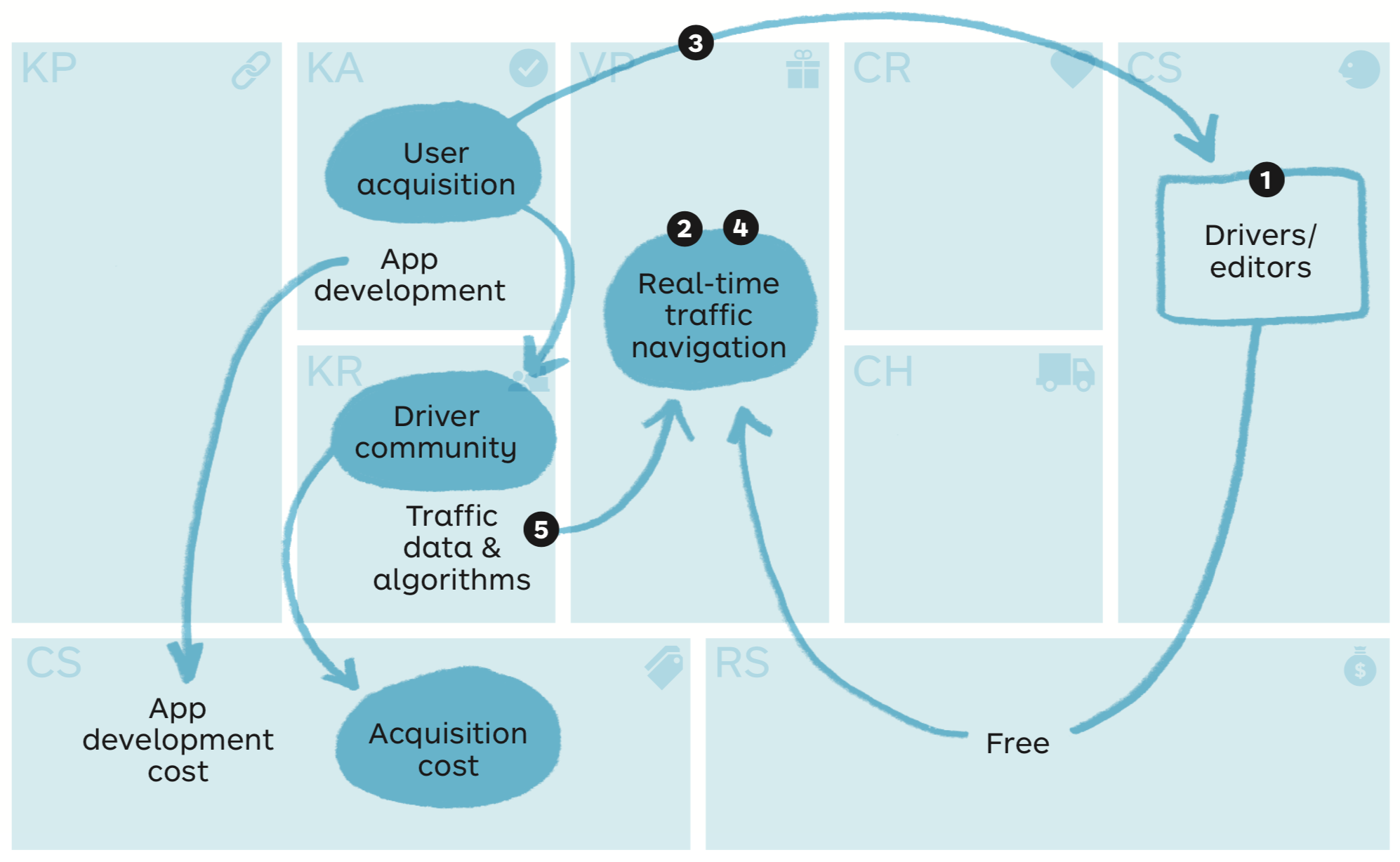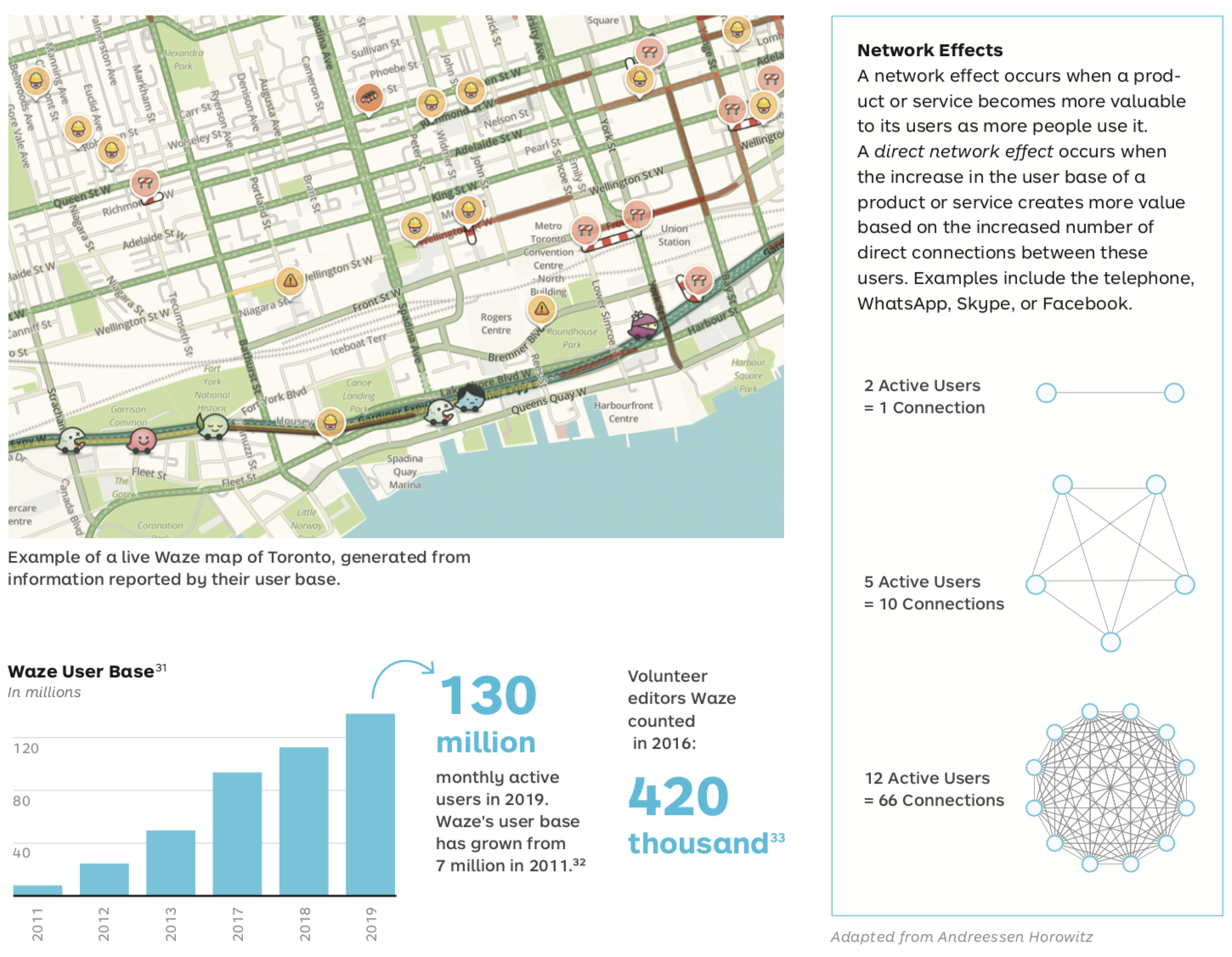Ehud Shabtai, Amir Shinar, and Uri Levine founded Waze in 2008. The business idea originated from a crowdsourced project developed by Ehud Shabtai in 2006. The project aimed to create a free digital map of Israel with free updates and distribution.
Waze then evolved into a traffic navigation app that combines the reach of a social network with GPS data to shorten the commutes of its users and reduce traffic congestion globally. It’s a great example of network effects, where the service becomes more valuable as more people use it.
Waze had more than 50 million users globally when Google purchased it in 2013 for $966 million, to improve its mapping service.

1. Identify user base for competitive advantage
Waze identifies its users as a critical resource to improve its digital maps. They instrumentalize users by collecting the data they generate and by asking them to actively help improve maps.
2. Solve pains and create gains for those users
Waze is not just a voice navigation system. Its traffic algorithm optimizes routes to help users avoid congestion and solves the pain of long delays in commutes for millions of drivers globally.
3. Acquire users aggressively
To build its user base quickly, Waze makes the strategic choice to offer the app for free. Users are drawn to the free tool and then stay for the steadily improving value proposition (i.e., the effectiveness of the algorithm).
4. Use users in your value proposition
Users contribute in three ways: (1) Waze collects driving times and GPS data from all users, (2) active users post traffic updates, and (3) a volunteer army of editors update maps and translate them into other languages.
5. Reap competitive advantage
With every new user, Waze algorithms become smarter, creating an even more attractive value proposition to existing and new users. Waze’s large and active global user base is difficult to replicate by a competitor.


